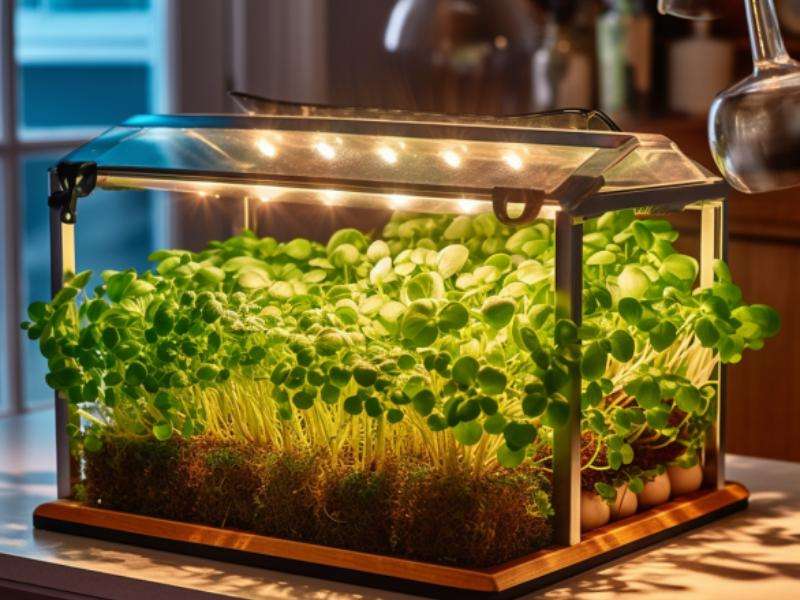Microgreen Types
Microgreens are young, edible plants harvested at the seedling stage, usually just after the first true leaves, known as cotyledons, have developed. These vibrant and tender greens are used to enhance the flavor, texture, and appearance of dishes and are celebrated for their nutritional content. Come with us as we provide a general overview of the various types of microgreens and links to detailed articles for those who wish to delve deeper.
What are Microgreens?
Microgreens are essentially baby plants, falling somewhere between sprouts and baby greens. They are harvested within 2-3 weeks of sowing and can be grown from a variety of plant seeds, including herbs, vegetables, and even some grains. They are versatile and can be easily grown indoors, year-round.
Nutritional Benefits
Microgreens are nutritional powerhouses. Despite their small size, they often contain higher concentrations of vitamins, minerals, and antioxidants compared to their mature counterparts. For example, red cabbage microgreens are known to have a higher concentration of vitamin C, while cilantro microgreens are rich in carotenoids.
Common Types of Microgreens
1. Brassica Family
Examples: Broccoli, Kale, Radish, Cabbage, Mustard
These microgreens have a range of flavors, from mild to peppery. They are particularly rich in vitamins A and C, calcium, and phytonutrients.
2. Asteraceae Family
Examples: Lettuce, Endive, Chicory
Microgreens from this family have a mild flavor and delicate texture. They are often used in salads and are known for their vitamin A and iron content.
Our comprehensive reviews elucidate the mystery of the many options available – coir, peat, vermiculite – enlightening you on the path to choosing the perfect home for your seeds.
3. Apiaceae Family
Examples: Dill, Carrot, Cilantro, Fennel
These microgreens have distinctive flavors that can add depth to a dish. They are rich in vitamins A and C, as well as fiber.


These microgreens have distinctive flavors that can add depth to a dish. They are rich in vitamins A and C, as well as fiber.
4. Amaryllidaceae Family
Examples: Garlic, Onion, Leek
Microgreens from the Amaryllidaceae family have a pungent flavor and are often used to add a punch to dishes. They are rich in antioxidants and have antibacterial properties.
5. Lamiaceae Family
Examples: Basil, Mint, Oregano
Lamiaceae microgreens are known for their aromatic quality. They are widely used in Mediterranean dishes and are rich in essential oils, vitamins, and antioxidants.
Culinary Uses
Microgreens can be used in a variety of ways in the kitchen. They can be added to salads for a burst of flavor, used as a garnish to add a touch of elegance to dishes, incorporated into smoothies for an extra nutrient boost, or even used in sandwiches and wraps.
Growing Microgreens at Home
Growing microgreens is an accessible and rewarding endeavor. With basic equipment such as a growing tray, soil, and seeds, you can grow microgreens year-round. They require minimal space and can thrive on a windowsill or countertop.
Further Reading
For those who are interested in learning more about specific types of microgreens, their nutritional benefits, and how to grow them, we have compiled a series of in-depth articles. Click on the links below to explore further:
So step forth, dear green enthusiasts, into the rich, teeming world of microgreens. Discover, learn, and grow with us at Microgreens Guru. For the love of greens, let us bloom together!







